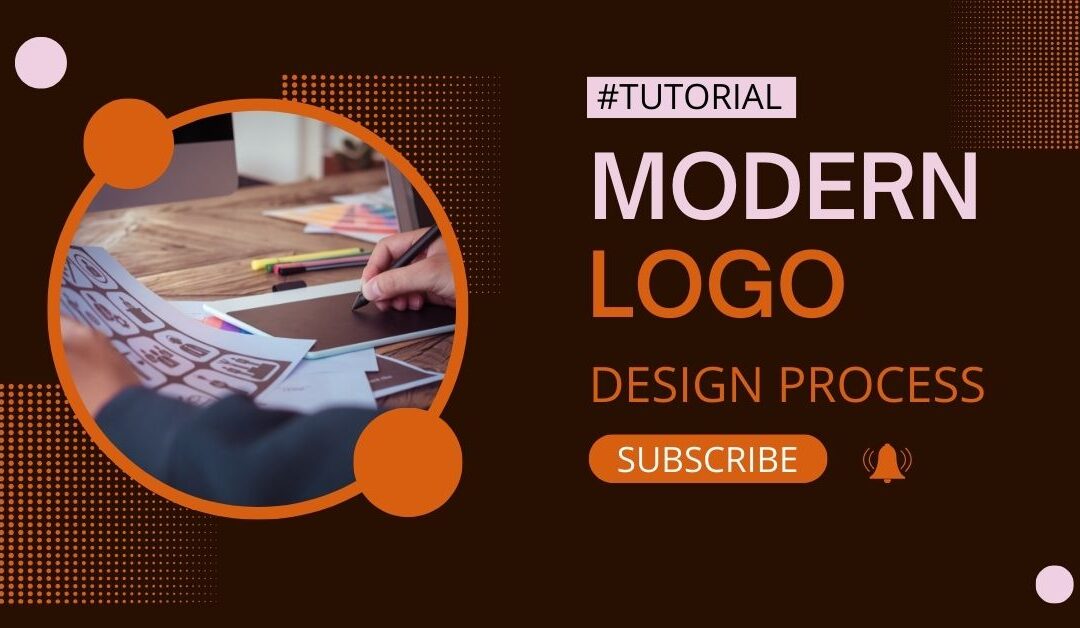In today’s digital age, where every business is vying for attention in a crowded marketplace, a well-designed logo can be the key to standing out from the competition. A logo is more than just a symbol; it’s the visual representation of your brand, encapsulating its identity, values, and essence in a single image.
Whether you’re a start-up looking to make a memorable first impression or an established enterprise seeking to revitalize your brand, mastering the art of logo design is essential. In this comprehensive guide, we’ll delve into the intricacies of logo design, from understanding its importance to implementing best practices that ensure your logo leaves a lasting impact.
The Importance of a design of a logo
A logo serves as the cornerstone of your brand identity, influencing how customers perceive your business. It’s often the first point of contact between your brand and potential customers, making it crucial to make a positive impression. Here are some key reasons why a well-designed logo is essential:
- Brand Recognition and design of a logo: A distinctive logo helps customers identify and remember your brand amidst a sea of competitors.
- Professionalism in design of a logo: A professionally designed logo instils trust and credibility in your brand, signalling to customers that you take your business seriously.
- Differentiation: Your logo sets you apart from competitors, showcasing what makes your brand unique and compelling.
- Memorability: A memorable logo sticks in the minds of customers, fostering brand recall and loyalty.
Understanding the Fundamentals of Design of a logo
Effective logo design is not just about aesthetics; it’s a strategic process that involves careful consideration of various elements. Let’s explore the fundamental principles of logo design:
- Simplicity in design of a logo: A simple logo is more memorable and versatile, ensuring it remains impactful across different mediums and sizes.
- Relevance of design of a logo: Your logo should reflect your brand’s identity, values, and industry, resonating with your target audience.
- Versatility: A good logo should look great in colour, black and white, and across various applications, from digital platforms to print materials.
- Scalability: Your logo should maintain its clarity and integrity when scaled up or down, ensuring it remains recognizable in all contexts.
- Timelessness: While trends come and go, a timeless logo stands the test of time, remaining relevant and effective for years to come.
The Logo Design Process and design of a logo
Creating a successful design of a logo involves a systematic approach that balances creativity with strategic thinking. Here’s a step-by-step guide to the logo design process:
- Research: Understand your brand, target audience, and competition to gather insights that will inform your design decisions.
- Brainstorming: Generate a range of conceptual ideas, exploring different visual elements, typography, and styles.
- Sketching: Translate your ideas into rough sketches, experimenting with various layouts and compositions.
- Digitalization: Refine your sketches using graphic design software, focusing on refining shapes, colours, and typography.
- Feedback and Iteration: Seek feedback from stakeholders and target audience, incorporating their input to refine and improve your designs through multiple iterations.
- Finalization: Select the most effective design from your iterations, ensuring it meets the criteria of simplicity, relevance, and versatility.
- Presentation: Present the final logo design to your client or stakeholders, providing rationale behind design decisions and showcasing its potential applications.
Best Practices for Effective Design of a logo
While every logo design project is unique, certain best practices can guide you towards creating impactful and memorable logos:
- Know Your Audience: Understand the demographics, preferences, and expectations of your target audience to create a logo that resonates with them.
- Keep it Simple: Avoid clutter and complexity; aim for a clean, minimalist design that communicates your brand message effectively.
- Choose Appropriate Colors: Select colors that evoke the right emotions and align with your brand’s personality and industry norms.
- Typography Matters: Pay attention to typography choices, ensuring they complement your logo’s design and reinforce your brand’s identity.
- Test Across Platforms: Assess how your logo appears across different platforms and mediums, ensuring it remains legible and impactful.
- Protect Your Brand: Trademark your logo to protect it from infringement and ensure exclusivity in your market.
Conclusion
In conclusion, the design of a logo is a critical aspect of building a successful brand identity. By understanding the importance of a well-designed logo, mastering the fundamental principles of logo design, and implementing best practices, you can create a logo that not only reflects your brand’s identity but also resonates with your target audience. Remember, a logo is more than just a visual symbol; it’s the embodiment of your brand’s values, aspirations, and promise to your customers. So invest the time and effort into crafting a logo that truly represents who you are and what you stand for.

